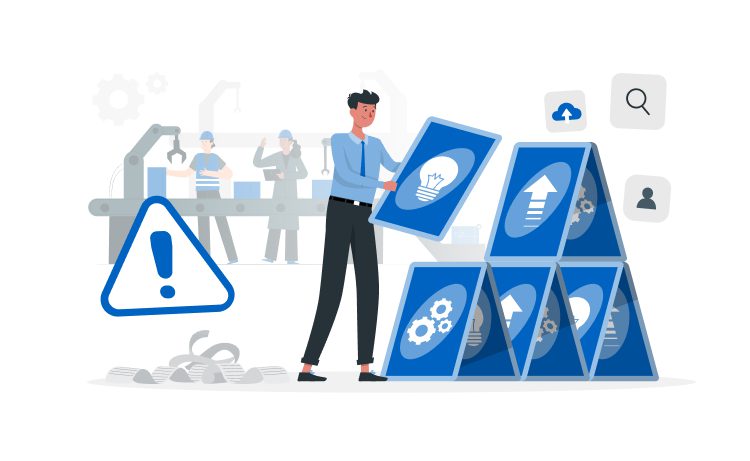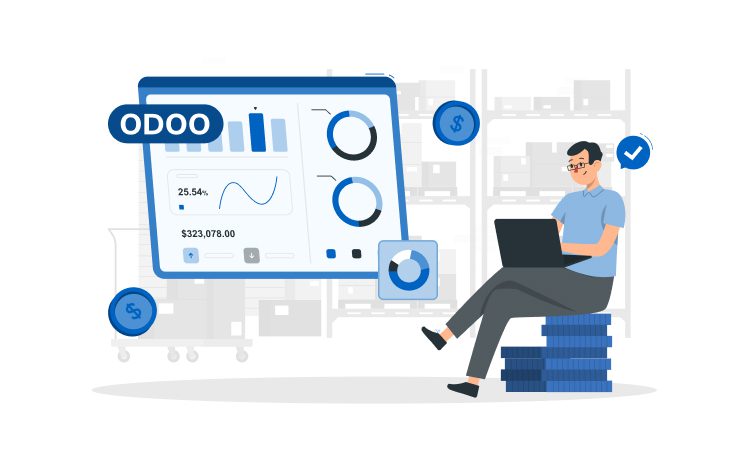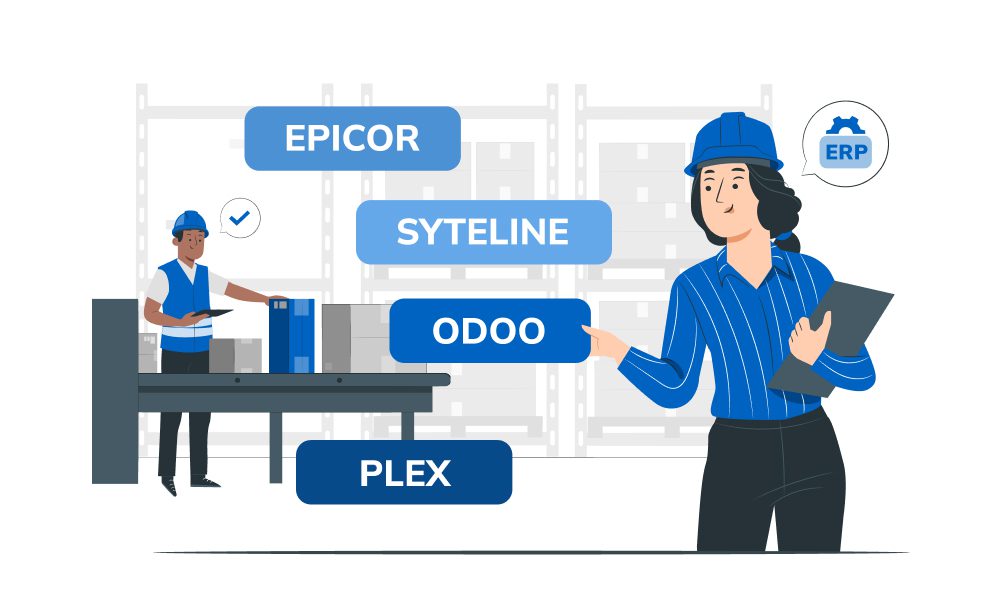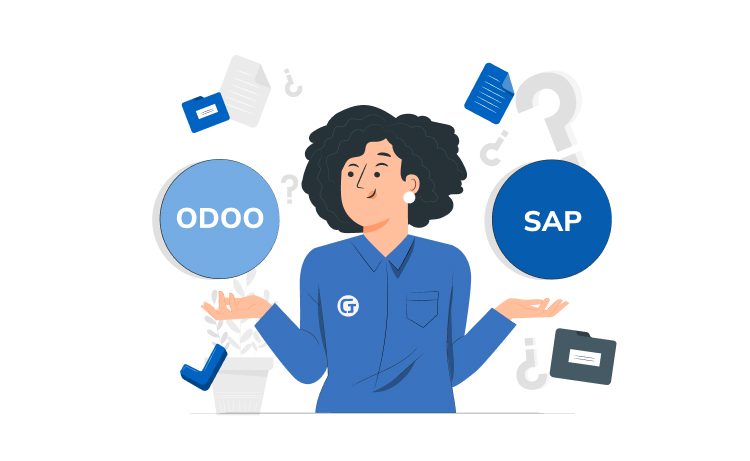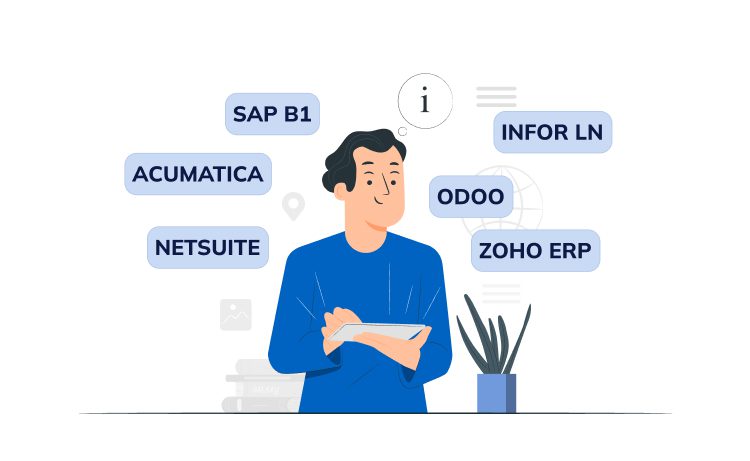
Top 10 Construction ERP Software to Power Up Your Business



Whether you are working with homeowners or corporate entities, remaining the #1 choice for solvent clients is a beast of a job. You need to go all out to stave off financial miscalculations, miscommunication, and delays. Adopting the right construction ERP software is a must if you want to keep juggling multiple projects in the long run. And no, it isn’t an overstatement.
An ERP system can bring all stable business operations – project management, inventory control, accounting, and resource planning – under one roof. Scattered data and disconnected processes can finally become a no-no. Your contractors and team members can collaborate smoothly with stakeholders and each other.
With proper ERP software, you can oversee multiple job sites with greater accuracy and no costly overruns. Let’s now discover which system can be the best shot.
Content
In 2025, the market is flooded with ERP systems, with its domain expected to generate US$55.88 billion in revenue. But they aren’t made the same. Generic solutions cater to a broad range of industries, centering on standard business processes alone. They can fill the bill for HR, finance, or inventory management but not unique challenges. You’ll have to find other ways to perform cost control or on-site activity tracking.
By using construction-specific ERP software, you gain greater control over project timelines and resource allocation, to name a few. The system helps mitigate risks of human errors (e.g., manual data entry) and compliance-related ones. You can also access live reports and respond to challenges proactively, keeping your projects within budget and scope.

In the construction industry, underperforming projects are not news. In 7 out of 10 cases, it is about poor project planning, budget overruns, labor shortages, and procurement issues. While all these problems belong to different categories, construction software makes for an all-encompassing solution.
Willing to improve your overall business performance? Invest in the construction ERP system with key features for modern construction business.
Enterprise resource planning software makes task management and collaboration a breeze. With built-in Gantt charts and automated scheduling, your team can allocate resources efficiently, prevent delays, and adjust timelines as needed. The system can serve as a communication bridge between general contractors, managers, and stakeholders.
Unlike other industries, construction projects involve large-scale investments and fluctuating costs. That’s why financial oversight is the keynote of business success. ERP software takes care of all things financial, from cash flow management to invoicing. You can track expenses in real-time and identify cost overruns before they escalate.
How you manage labor, equipment, and materials can make or break the project. Construction ERP systems are equipped with tools for effective equipment management and human resource allocation. Monitoring maintenance schedules can prevent downtime and forestall overstaffing.
Things can fall apart without timely material procurement. The right construction ERP system allows for keeping tabs on vendors and materials. You can monitor orders and supplier prices. With automated procurement workflows, you can cut through red tape, reducing paperwork and slip-ups.
Construction projects may feel like drowning in a sea of paperwork, with blueprints, contracts, permits, and reports piling up. ERP software represents a one-stop digital hub where all crucial files are securely stored and easy to find. Important documents won’t get lost in the shuffle ever again. You can save yourself from paper clutter and expensive blunders.
Playing by the rules is a must-do, not a maybe, for construction enterprises. ERP systems come packed with compliance tracking tools that help businesses stay on the right side of the law—from industry standards to environmental policies to worker safety protocols. Your teams can get a heads-up before inspections or permit deadlines, avoiding last-minute scrambles.

Staying on top of projects and budgets is never easy in the construction industry. But the solid ERP can smooth the way. Whether you are looking to iron out inefficiencies or keep expenses in check, our list of 10 best construction ERP solutions can help you narrow down the perfect fit.
It is a scalable ERP solution designed with the build-your-own-system approach at its core. It is ideal for cost-conscious construction professionals. You can handpick the tools you need, including finance, procurement, HR management, and more.
Advantages:
Drawbacks:
It is a top-tier ERP system built to help construction companies excel in budgeting and teamwork. With its web-based capabilities, your teams can have all their ducks in a row, from contracts to RFIs.
Advantages:
Drawbacks:
It is a comprehensive solution helping enterprises get a firm grip on project management and fieldwork. Tailored for the construction sector, CMiC covers payroll, job costing, and resource planning. Its mobile-friendly nature can keep your employees in sync, whether at the office or on-site.
Advantages:
Drawbacks:
It is made to improve project coordination and regulatory compliance. Viewpoint Vista ties together accounting, payroll, job costing, and resource planning into a single, powerful system. Its cross-platform support can help you fine-tune operations.
Advantages:
Drawbacks:
It is a well-rounded ERP system with top-notch accounting tools and AI-driven insights. Once adopted, you can make smarter use of resources. No matter how many projects you jungle simultaneously, you can keep them all on track with no strain.
Advantages:
Drawbacks:
It is a cloud-driven ERP explicitly built for construction businesses looking to get a handle on resource planning. Offering live data tracking and mobile compatibility, Acumatica can save you deadline headaches. Your project managers won’t complain about third-party integrations ever again.
Advantages:
Drawbacks:
It is a construction-focused ERP. Whether for smoothing out workflows, getting contract oversights, or dealing with cost overruns, COINS is the right choice. It offers a wide range of features that you can benefit from.
Advantages:
Drawbacks:
It is a heavy-duty software solution perfect for large and mid-sized construction enterprises that need serious muscle in managing projects. Penta supports multi-company and multi-currency operations. With its automation and field tracking capabilities, you can run a tight ship.
Advantages:
Drawbacks:
Once adopted, you can ditch outdated paperwork and replace it with digital tracking for RFIs. eSUB create a real-time communication bridge between office staff and crews in the field. You can minimize miscommunications and delays.
Advantages:
Drawbacks:
It is a go-to solution for construction and service-based contractors looking to increase project profitability. Jonas is also known for its strong accounting backbone. You can ensure all your schedules stay intact with automated billing, inventory tracking, and field service integration.
Advantages:
Drawbacks:
Rolling out the best construction ERP software is a major shift in how a company runs the show. If not handled properly, it can throw a wrench in operations. To get it right, you need to lay the groundwork. Here’s how to nail the implementation without unnecessary hiccups.
A solid rollout starts with getting everyone on the same page. Commence by mapping out key objectives and controlling whether the ERP aligns with business needs. The next step is sorting out data migration—cleaning up old records and transferring them without losing critical information.
Once the system is up, training becomes the make-or-break factor. Instead of throwing employees into the deep end, introduce the system in phases – you can start with key users, who can then pass the baton to the rest of the team. Offer hands-on training, quick reference guides, and ongoing support so employees don’t feel like being left in the dark. A little patience upfront saves headaches down the road.
No ERP launch goes off without a hitch. One of the biggest hurdles is resistance to change—people get set in their ways and may be wary of new systems. To smooth out the transition, involve employees early, show them how the ERP makes their jobs easier, and address concerns upfront.
Another common roadblock is poor data migration. Outdated and incomplete records can throw a spanner in the works. Cleaning up data before moving it over can save you the hassle down the line.
Finally, companies often underestimate the time and effort needed. Rushing through setup or skimping on training can backfire, leaving teams frustrated and the system underutilized. Slow and steady wins the race—gradual adoption helps employees adjust and iron out any kinks.
Once the ERP is in full swing, it’s time to take stock of the results. Track KPIs like cost savings, project completion rates, and operational efficiency. How can you understand that the system is doing its job? Your teams can waste less time on admin tasks, and fewer mistakes can slip through the cracks.
A well-implemented construction ERP must pay for itself over time. You need to monitor progress, make tweaks where needed, and ensure the system delivers value long after launch.
Running a construction business means tackling various challenges. And you may face another one trying to get your ERP system up and running without a hitch. Team up with a certified implementation partner to keep potential issues at bay. If Odoo feels like the right software for you, we would be happy to help.
At Glorium Technologies, we know the ropes of ERP installation. As an official Odoo partner, we manage setup, data migration, custom tweaks, and ongoing support. Whether you seek personalized features or an effortless switch from your old software, we are here for you.
Make the best out of Odoo with specialists who know it inside out. Book a free 30-minute consultation today, and let’s map out your next move!
